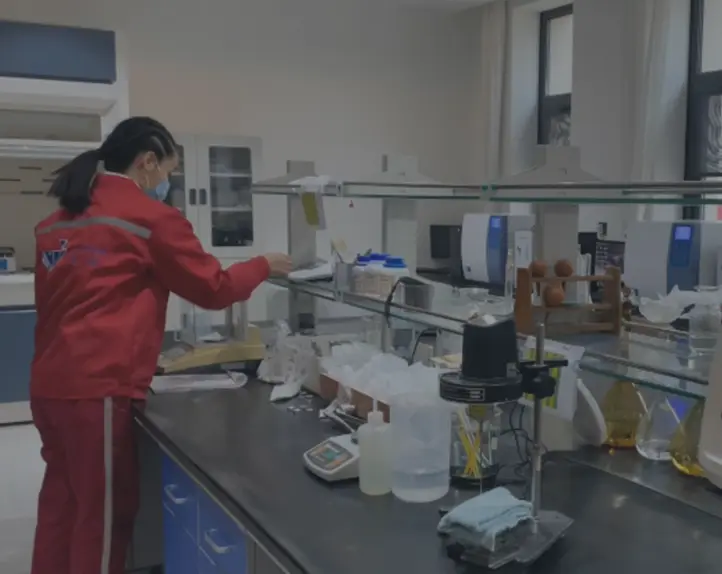
Nov . 07, 2024 08:28 Back to list
Optimizing Construction Processes Using HPMC for Enhanced Performance and Sustainability
The Importance of Construction HPMC in Modern Building Practices
In the evolving landscape of construction and architecture, the selection of materials and methods plays a crucial role in determining the efficiency, sustainability, and overall success of a project. One of the materials that has gained significant attention in recent years is Hydroxypropyl Methyl Cellulose (HPMC). This water-soluble polymer has become vital in various construction applications, particularly due to its unique properties and performance benefits.
Understanding HPMC
HPMC is a cellulose ether that is derived from natural cellulose through a series of chemical processes. Its modification imparts an array of advantageous properties, making it a versatile component in the construction industry. HPMC is primarily used as a thickener, binder, film-former, and water-retaining agent, which enhances its utility in various construction materials, including adhesives, mortars, and plasters.
Key Properties and Benefits
1. Water Retention One of the standout features of HPMC is its ability to retain water. This property is critical in construction applications like tile adhesives and dry-mixed mortar. By retaining moisture, HPMC ensures that the hydration of cement proceeds efficiently, allowing for stronger bond formation and reducing the risk of cracks. This is particularly essential in hot and arid climates where rapid evaporation can compromise the integrity of construction materials.
2. Enhanced Workability HPMC improves the workability of construction materials, making them easier to mix and apply. It increases the viscosity of the mix, which prevents segregation and allows for a smoother application. This characteristic is especially beneficial for workers, as it means less effort is required during application, increasing productivity on-site.
3. Adhesion and Bonding Strength The use of HPMC in adhesives contributes to higher bonding strength. Its film-forming abilities improve the adhesive properties of tile adhesives and finish coats, providing better adhesion even on difficult substrates. This is fundamental for ensuring the longevity and durability of structures, preventing issues like delamination or failure.
construction hpmc

4. Versatility HPMC is compatible with a wide range of materials, including cements, gypsum, and various additives. This versatility makes it suitable for use in multiple applications, from floor and wall tiles to plastering and waterproofing systems. Contractors and builders appreciate the adaptability of HPMC in different formulations and conditions.
5. Sustainability As the construction industry increasingly focuses on sustainable practices, HPMC presents an eco-friendly option. Being derived from natural cellulose, it is considered a more sustainable alternative to many synthetic additives. Furthermore, its water-retention properties can lead to lower water usage during construction, contributing to environmentally friendly building practices.
Applications in Construction
The applications of HPMC in construction are extensive. In tile adhesives, for example, the incorporation of HPMC improves adhesion and workability, making it a popular choice among manufacturers. In plaster and mortar mixtures, HPMC enhances the consistency and performance of these materials, ensuring that they provide a durable and long-lasting finish.
Moreover, HPMC is also used in the production of self-leveling compounds, decorative coatings, and even in concrete formulations. Its multifunctional role significantly impacts the overall quality and performance of construction materials, making it an indispensable ingredient in modern building practices.
Conclusion
In conclusion, Hydroxypropyl Methyl Cellulose (HPMC) represents a breakthrough in construction technology with its myriad of benefits and applications. As construction projects become more complex and demanding, the use of innovative materials like HPMC can help meet these challenges head-on. By improving workability, enhancing bonding strength, retaining moisture, and supporting sustainable practices, HPMC not only contributes to the efficiency of construction processes but also plays a vital role in ensuring the longevity and durability of buildings. Embracing such advanced materials will be key to the future of construction, paving the way for more resilient and efficient building practices that can stand the test of time.
-
Versatile Hpmc Uses in Different Industries
NewsJun.19,2025
-
Redispersible Powder's Role in Enhancing Durability of Construction Products
NewsJun.19,2025
-
Hydroxyethyl Cellulose Applications Driving Green Industrial Processes
NewsJun.19,2025
-
Exploring Different Redispersible Polymer Powder
NewsJun.19,2025
-
Choosing the Right Mortar Bonding Agent
NewsJun.19,2025
-
Applications and Significance of China Hpmc in Modern Industries
NewsJun.19,2025







